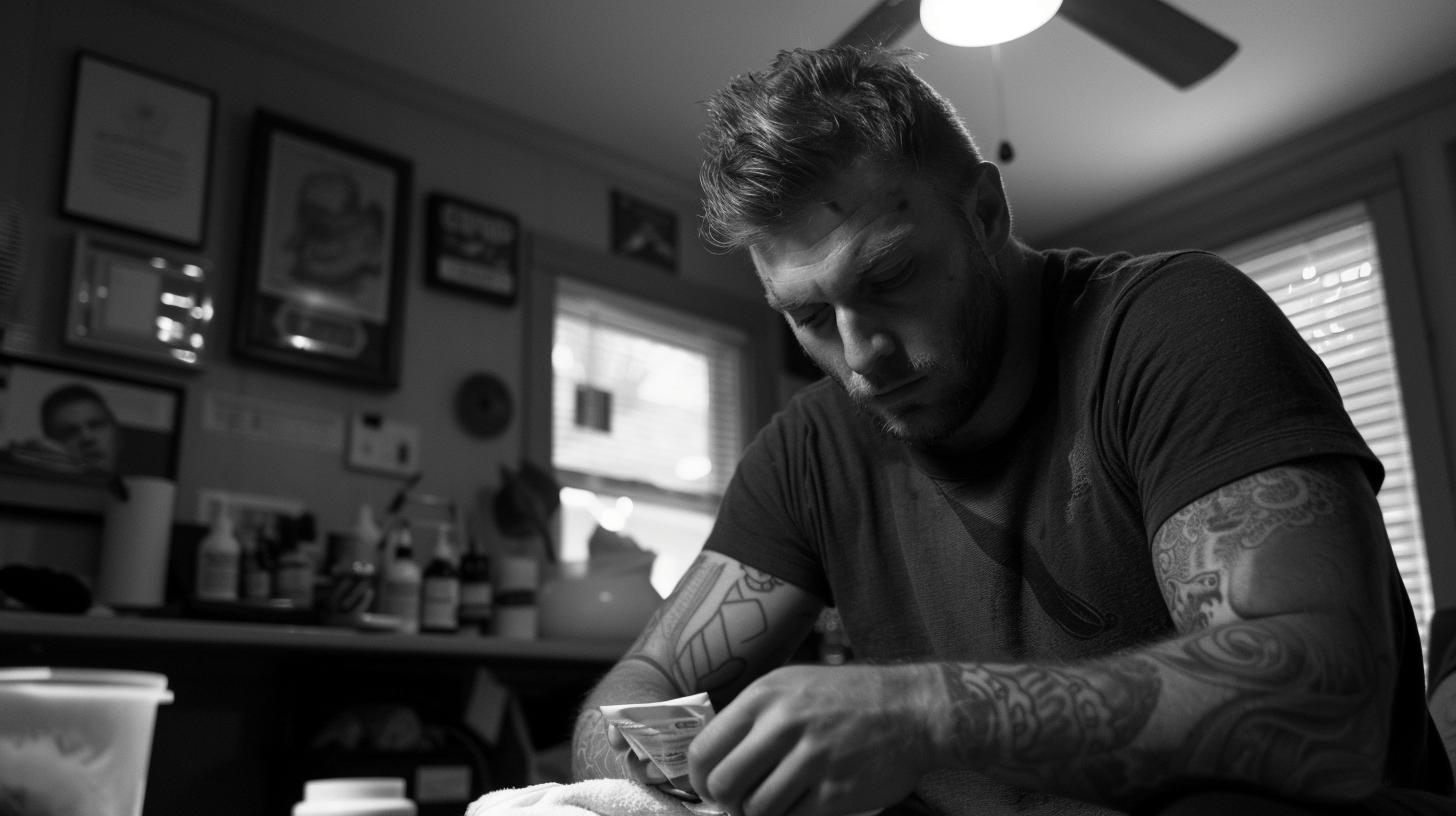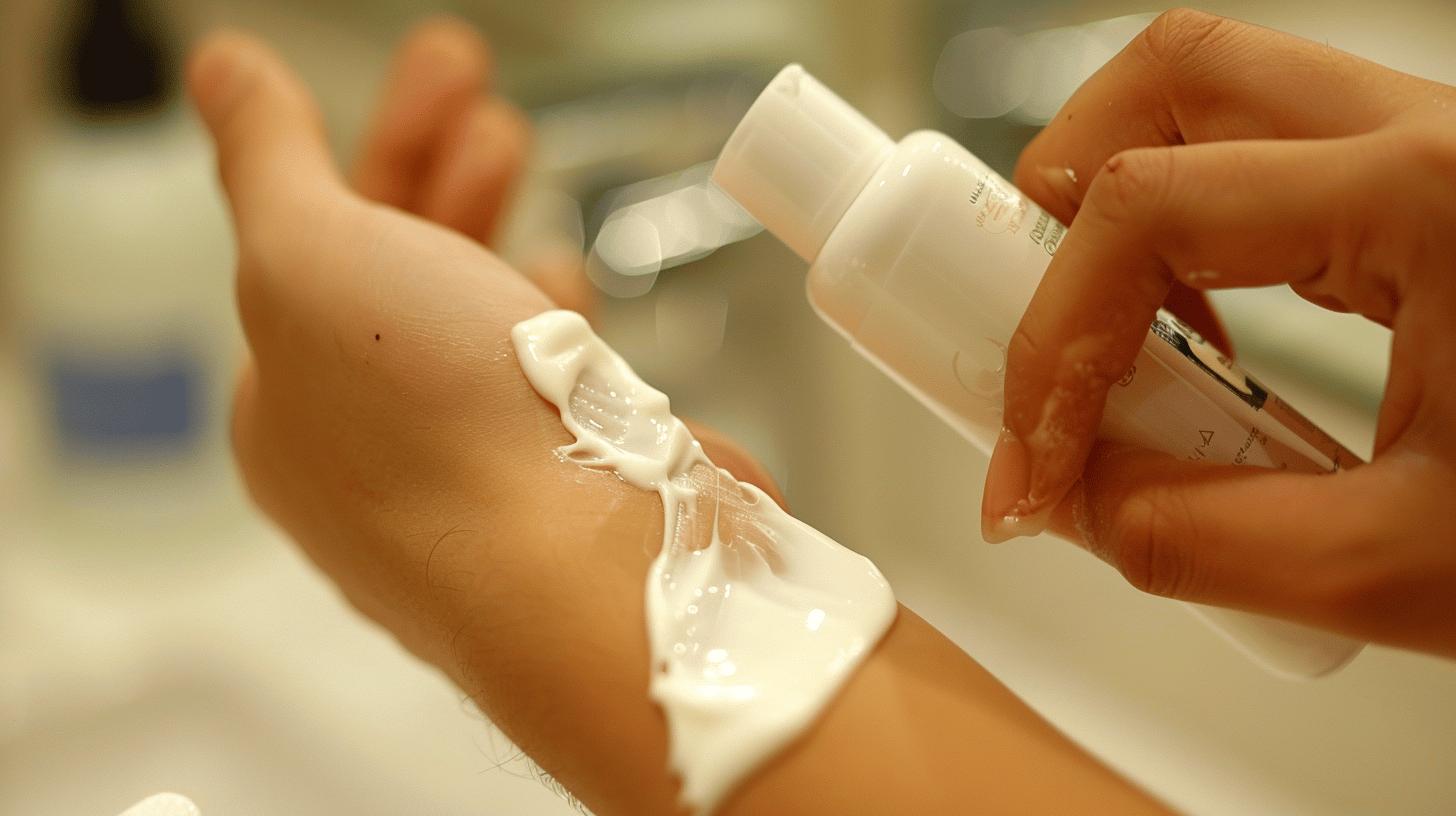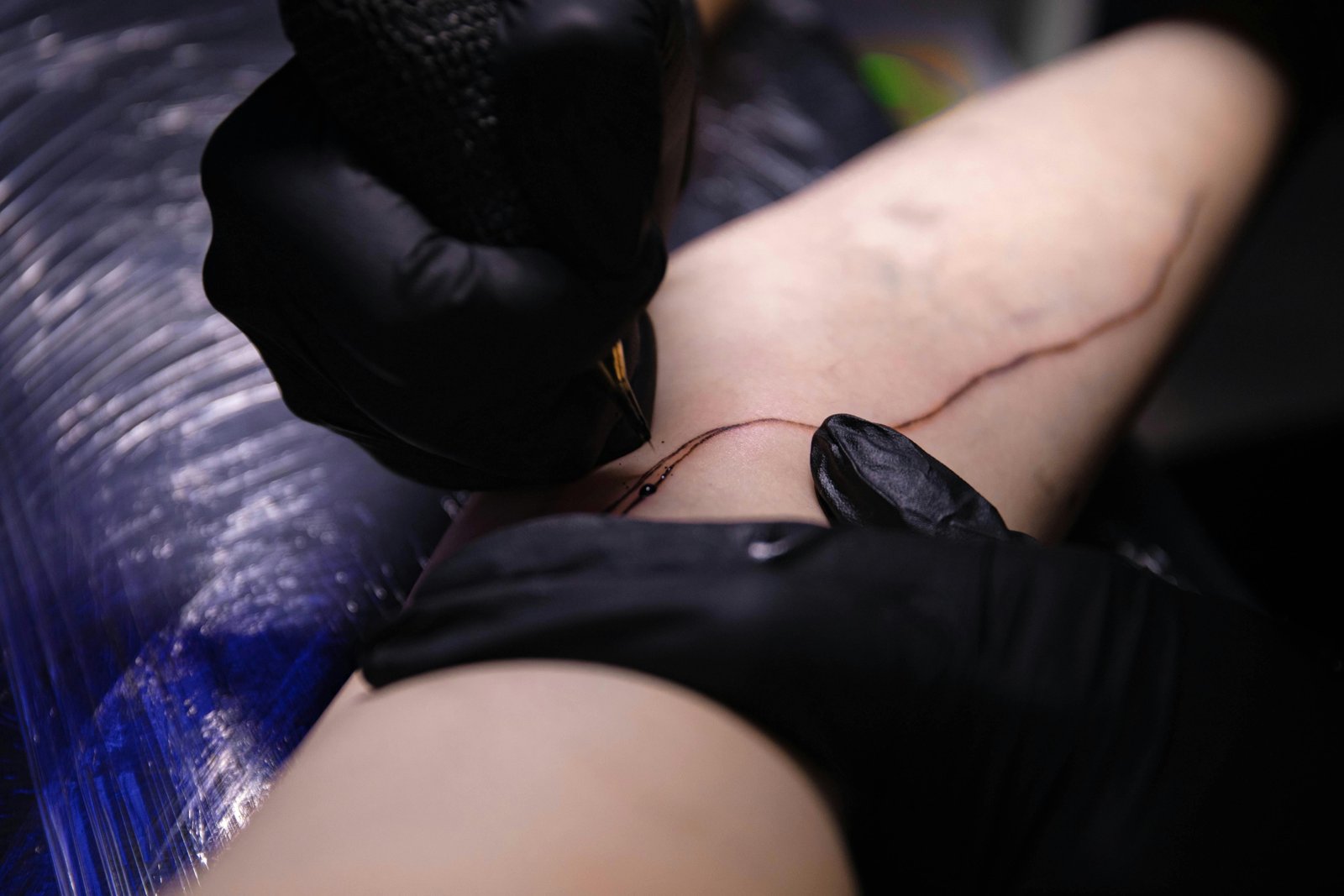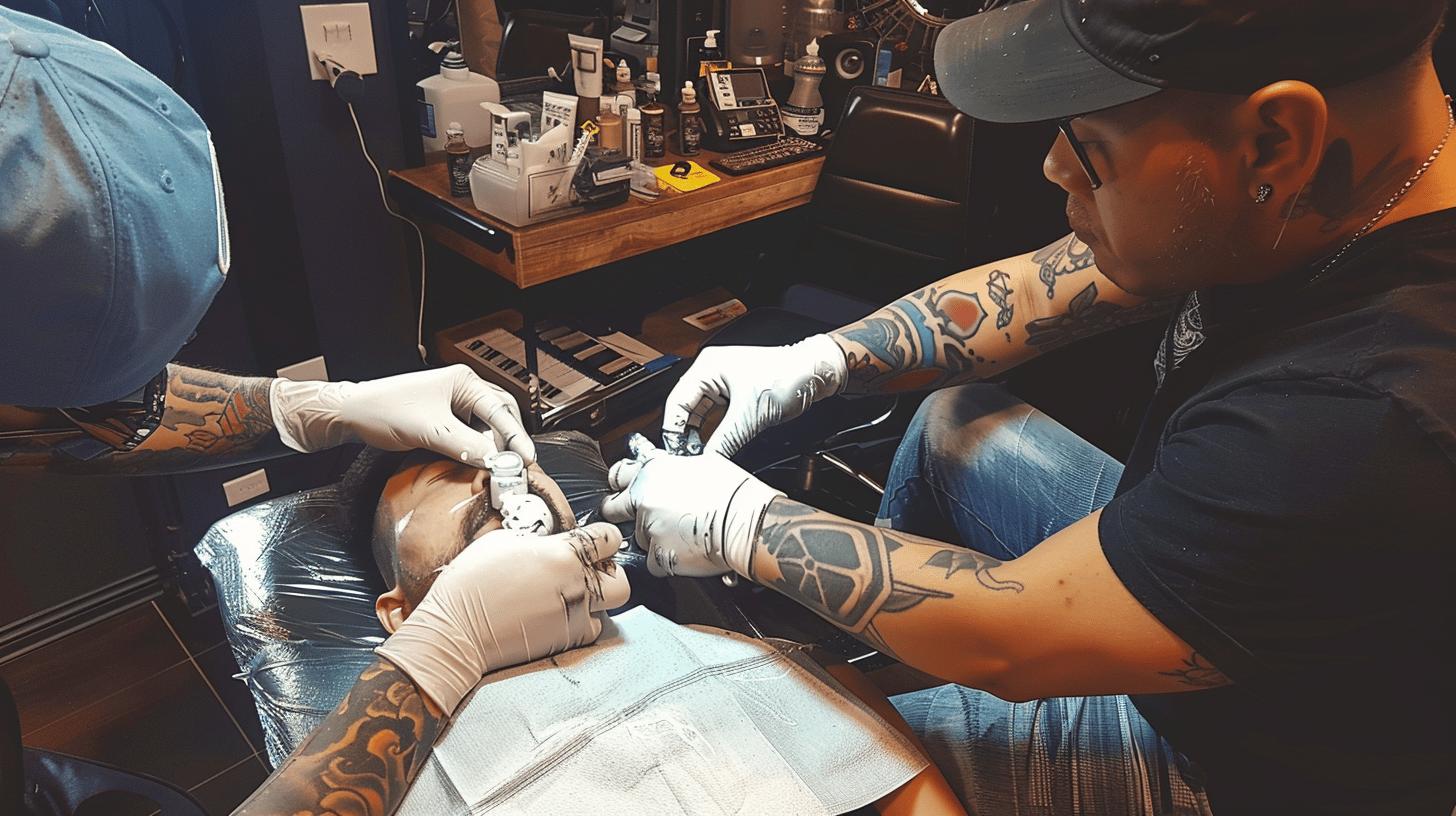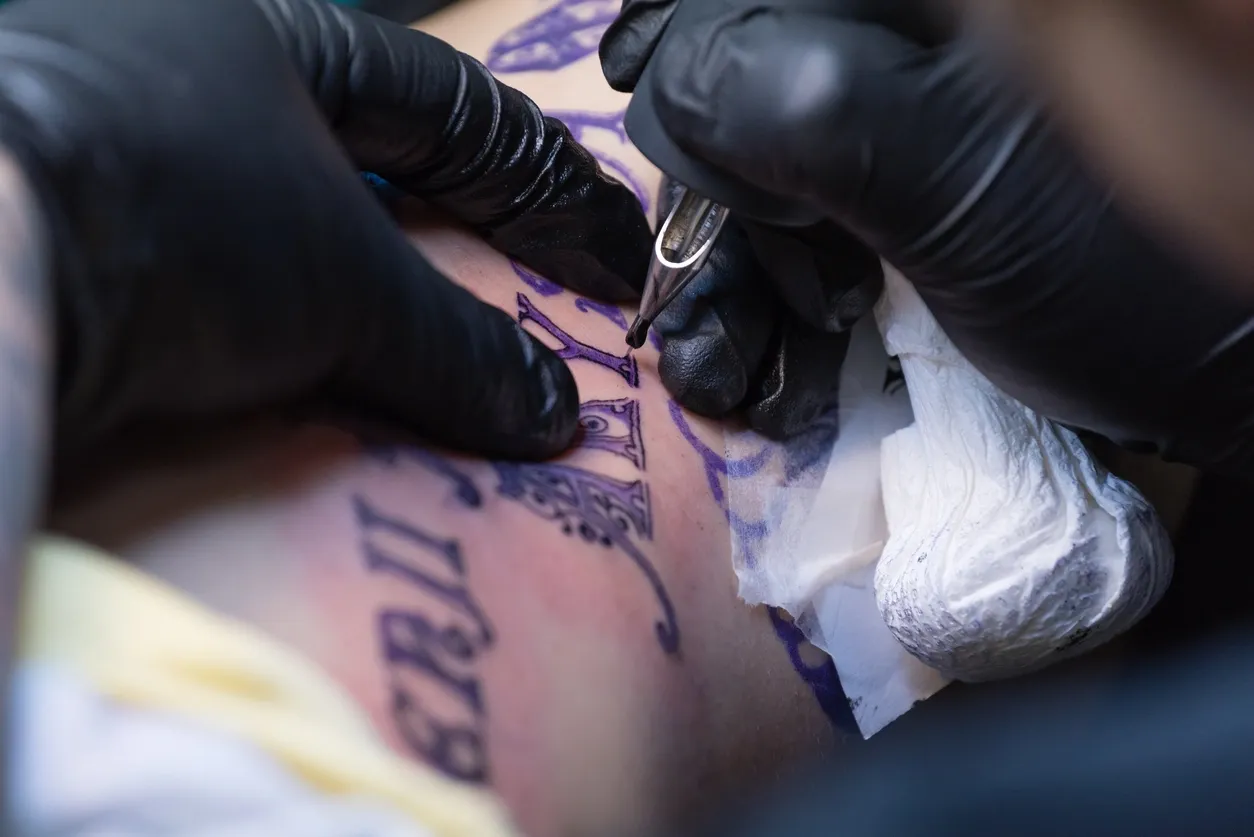7 Smart Reasons to Use Numbing Cream Before Getting a Tattoo for a Painless Ink Experience
Thinking about using tattoo numbing cream but unsure if it actually works—or if your tattoo artist will allow it? You’re not alone. Whether it’s your first tattoo or your tenth, pain remains one of the biggest concerns before a tattoo session. Some people swear by tattoo numbing cream for longer sessions and sensitive areas, while others question if it affects ink quality or healing. In this guide, we’ll break down the pros and cons of using numbing cream, look at tattoo artist opinions, and explore whether it’s worth using numbing cream before your next tattoo.
Should I Use Numbing Cream Before a Tattoo? The Pros and Cons Explained
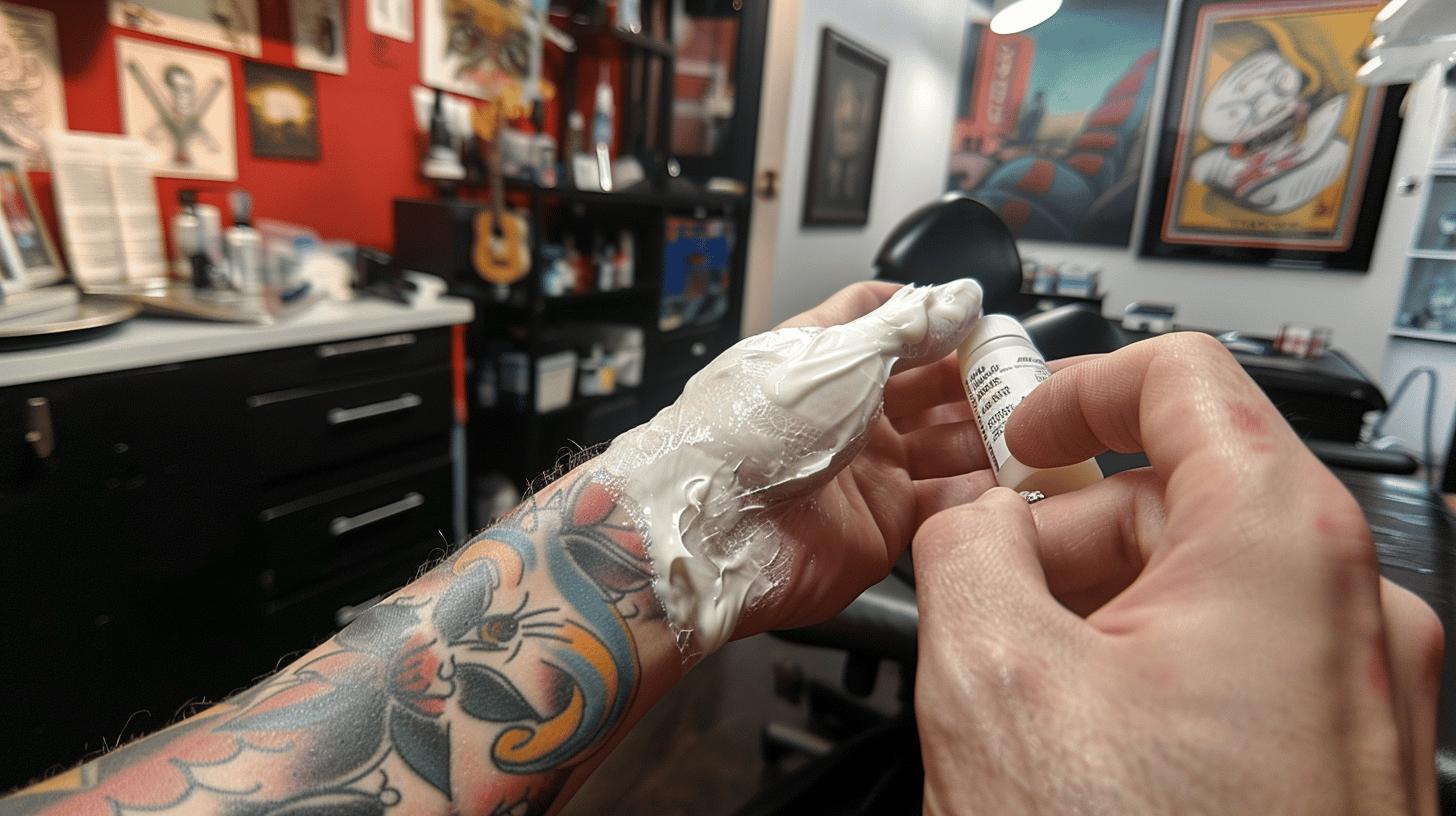
Using a tattoo numbing cream can significantly reduce the pain you feel during a tattoo session. These creams work by temporarily blocking pain signals from the nerves in your skin to your brain using a local anaesthetic such as lidocaine. For many, this means they can sit longer, stay calmer, and focus less on the discomfort. If you’re getting a new tattoo in a sensitive area—like ribs, elbows, or inner arms—choosing to use a numbing cream before a tattoo can make the process far more tolerable.
But it isn’t always straightforward. While some tattoo artists use numbing cream or allow clients to use it, others are strongly against it. Concerns include how the cream affects the skin’s texture, how ink absorbs, and how the tattooing needle interacts with numbed skin. If the numbing effect starts to wear off mid-session, the sensation can shift suddenly. Using numbing cream before getting a tattoo requires proper timing and application to avoid patchy numbness or irritation.
Pros of Using Tattoo Numbing Cream
- Reduces the pain during the tattoo process
- Helps reduce anxiety for first-timers
- Allows for longer tattoo sessions without breaks
- Makes tattoos in sensitive areas more manageable
- Can improve focus and reduce physical stress
- Widely available in options like Emla and other lidocaine-based creams
Cons of Using Tattoo Numbing Cream
- May cause skin irritation or allergic reaction
- Can alter skin texture, making tattooing harder
- Some tattoo artists don’t accept working on numbed skin
- Ink may not settle as cleanly in some cases
- Timing errors can cause uneven numbness or early fade
- May require a prescription for stronger versions
Whether or not you should use numbing cream before a tattoo often depends on personal pain tolerance, placement of the new ink, and your artist’s preferences. Always ask your tattoo artist in advance to avoid any issues on the day of your tattoo appointment.
How Tattoo Numbing Cream Works and How Long It Lasts
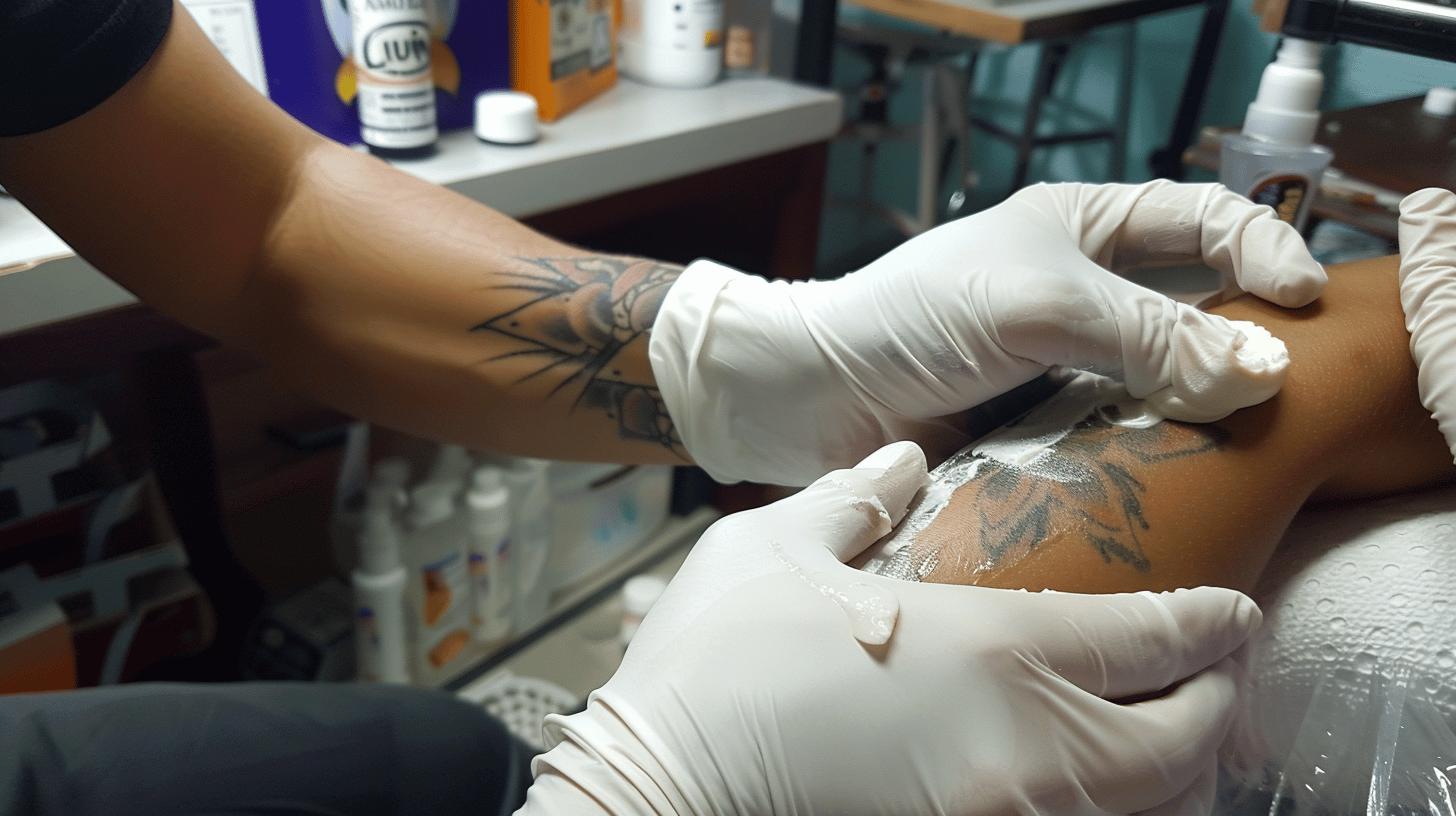
Tattoo numbing cream works by using a local anaesthetic—usually topical lidocaine—to temporarily block pain signals sent from the nerves in your skin to your brain. When applied correctly, the numbing agent creates a numb sensation in the area of skin where the cream is applied, reducing the amount of pain you feel during the tattoo process. This can make the experience far more manageable, especially if you’re getting a tattoo in a sensitive spot or sitting for a long session.
The numbing effect doesn’t happen instantly. Most skin numbing creams take 30 to 60 minutes to take effect, depending on the strength of the formula and how well it’s applied. For effective numbing, apply a thick layer of cream 90 minutes before your tattoo appointment and wrap the area in plastic film to help it absorb into the skin. Once active, the tattoo numbness duration typically lasts between 2 and 4 hours, although some products—like TKTX—claim to last up to 5 hours. If the cream starts to wear off mid-session, the pain can return suddenly, so timing is critical.
| Product Name | Time to Take Effect | Duration |
|---|---|---|
| HUSH | 60 minutes | 3–4 hours |
| TKTX | 45–60 minutes | 3–5 hours |
| Emla | 60 minutes | 2–3 hours |
Using numbing cream for tattoos can significantly reduce your discomfort if applied and timed properly. Always ask your tattoo artist if they’re comfortable working on numbed skin before your next tattoo.
How to Apply Numbing Cream Before a Tattoo Properly
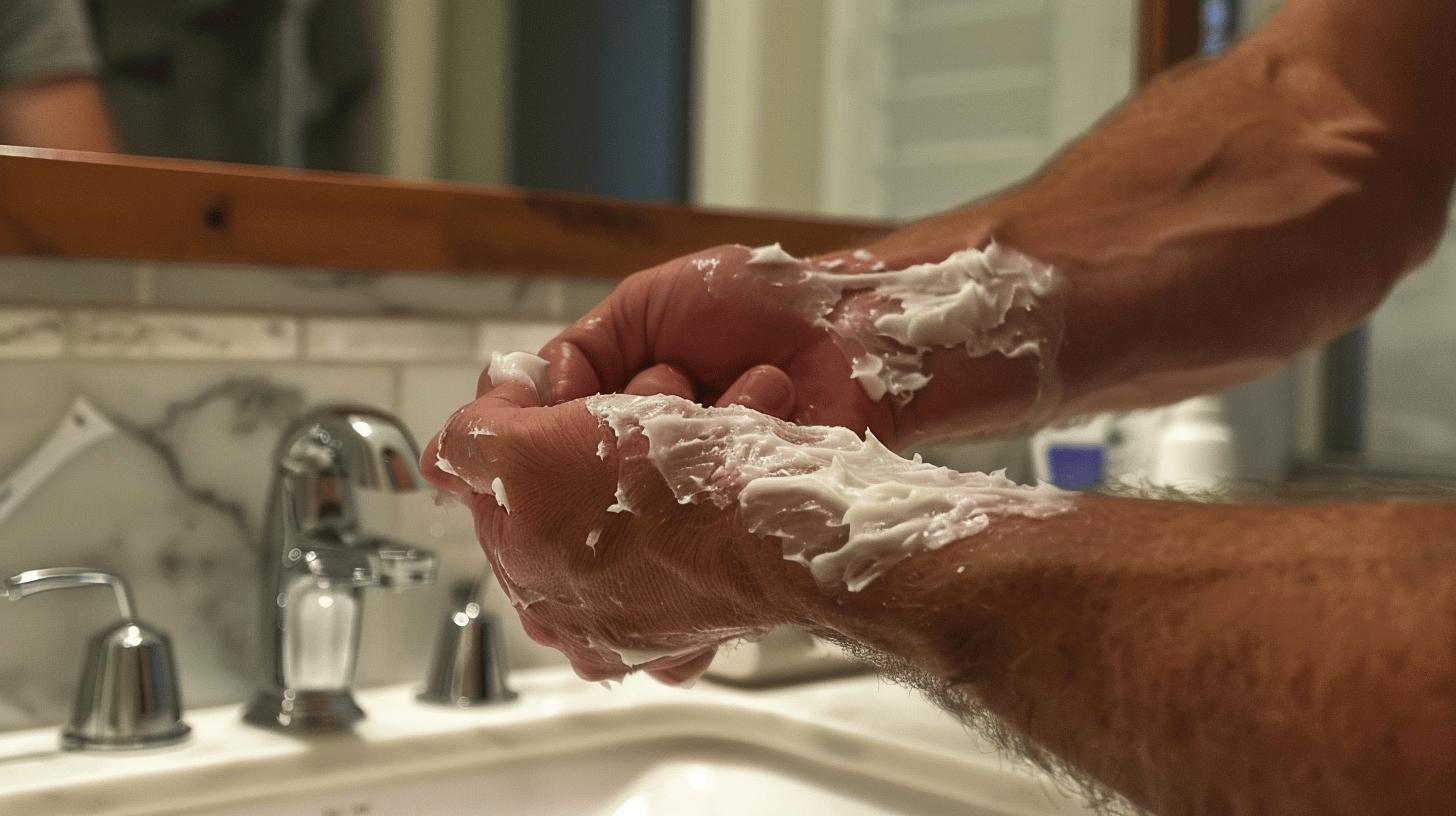
Using a tattoo numbing cream the right way is critical if you want effective numbing and a smoother tattoo experience. Incorrect application—such as applying too little, not wrapping it properly, or poor timing—can reduce the numbing effect and make the tattoo more painful than it needs to be. If you want to use numbing cream before a tattoo, follow this step-by-step tattoo numbing cream application guide.
7 Steps to Apply Numbing Cream Before a Tattoo
- Clean the area of skin thoroughly
Wash the area you’re getting a tattoo with soap and warm water. Pat it dry completely. This removes oils, sweat, and dirt that could block the numbing cream from absorbing. - Apply a thick layer of cream
Don’t rub it in. Use a generous amount of the tattoo numbing cream and spread it evenly over the entire area. The goal is full coverage—not massage. Let the cream sit on the surface. - Wrap the area in plastic film
Cover the cream with cling film to trap heat and help the numbing agent absorb into the skin. This step is key if you want to numb the area properly. - Wait 60 to 90 minutes
Most creams—such as those with topical lidocaine like Emla—take between 30 and 60 minutes to take effect. Waiting longer (up to 90 minutes) ensures deeper numbing. - Remove the film just before tattooing
Wipe off the excess cream using a clean cloth or paper towel. The skin should feel numb to the touch and ready for the session. - Tell your tattoo artist
Let your tattoo artist know that you’ve used a numbing cream before your tattoo appointment. Some artists may need to adjust their technique slightly. - Don’t reapply during the session
Unless your tattoo artist agrees, do not reapply cream mid-session. Most numbing creams are only meant to be used before the tattoo process begins.
Applying numbing cream before getting a tattoo can reduce the pain you feel, but mistakes like using too little cream or removing it too early can make the numbing less effective. Always use a skin numbing product with clear instructions and ask your tattoo artist if they’re comfortable with numbed skin.
Best Tattoo Numbing Creams in the UK: Reviewed and Compared
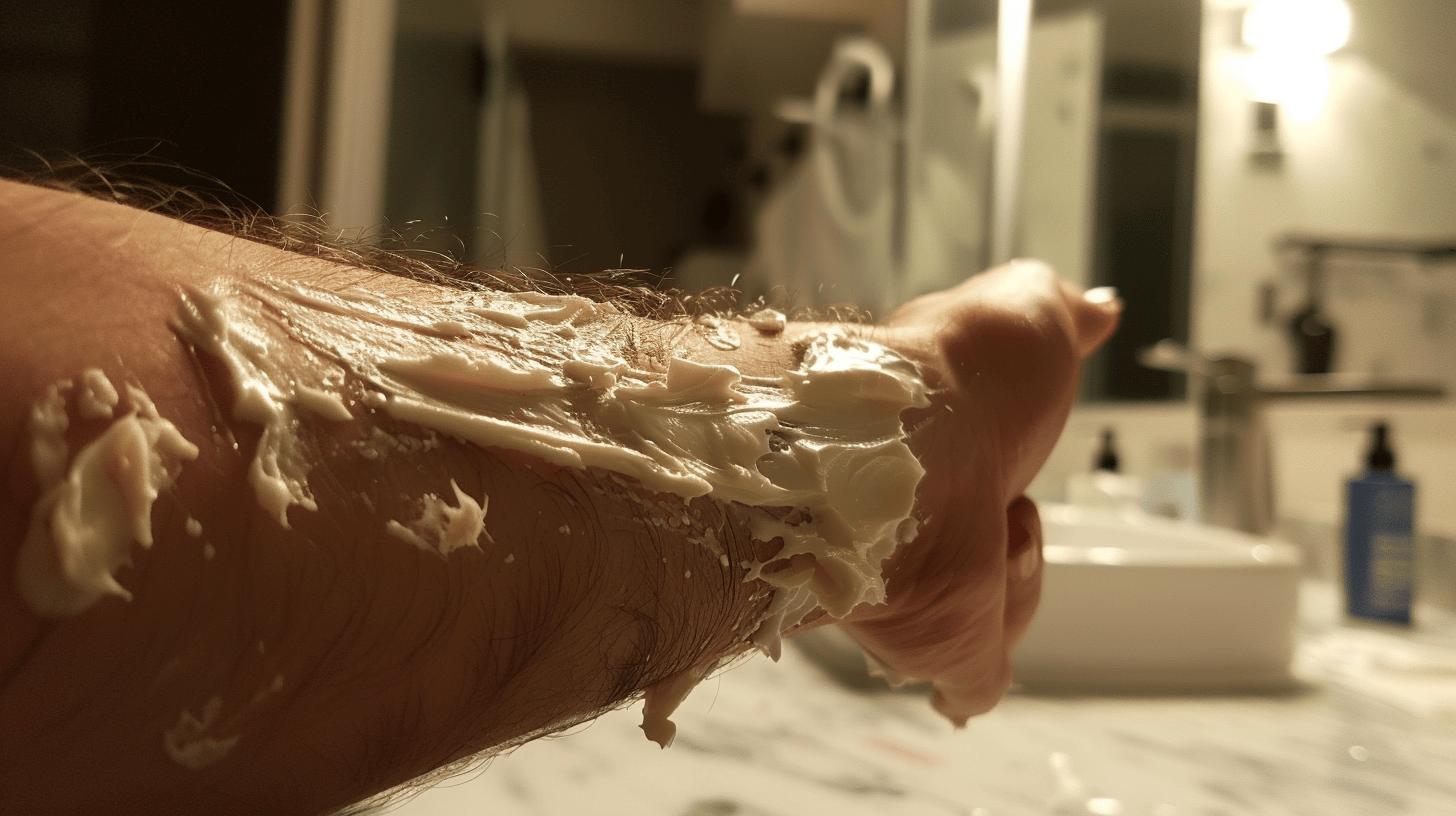
Choosing the best tattoo numbing cream depends on how long you need to numb the area, the strength of the lidocaine, and where you can buy it. The most effective creams use a local anaesthetic like topical lidocaine at around 5% concentration. This creates a strong numbing effect by blocking pain signals from the nerves in your skin. For longer or more painful sessions, many in the tattoo community prefer creams with extended duration and fast onset.
To help you decide which numbing cream for tattoos works best, we’ve compared five top-rated products available in the UK. These creams are widely stocked, including through Amazon UK and Boots. Each has been reviewed for its performance during a tattoo session, availability, and suitability for different types of tattoos.
| Brand | Lidocaine % | Session Suitability | Price Range | User Reviews |
|---|---|---|---|---|
| HUSH | 4% | Long sessions (3–4 hrs) | £25–£35 | Highly rated for comfort and ease |
| TKTX | 5% | Long sessions (up to 5 hrs) | £15–£30 | Strong numbing, fast acting |
| Emla | 2.5% lidocaine + 2.5% prilocaine | Short to medium sessions | £5–£10 | Trusted, widely available |
| Signature | 5% | Medium to long sessions | £20–£30 | Effective for most tattoos |
| Signature+ | 5% | Extended sessions | £25–£35 | Great for sensitive areas |
Most of these **skin numbing creams** can be purchased without a **prescription from your local pharmacy**, though stronger options like TKTX are often found online. If you want to **use a numbing cream before a tattoo**, make sure it suits your skin and session length. Always check reviews and ask your **tattoo artist** if they’re comfortable working with **numbed skin** before applying.
Tattoo Pain Relief Methods Compared: Creams, Sprays, and Natural Options
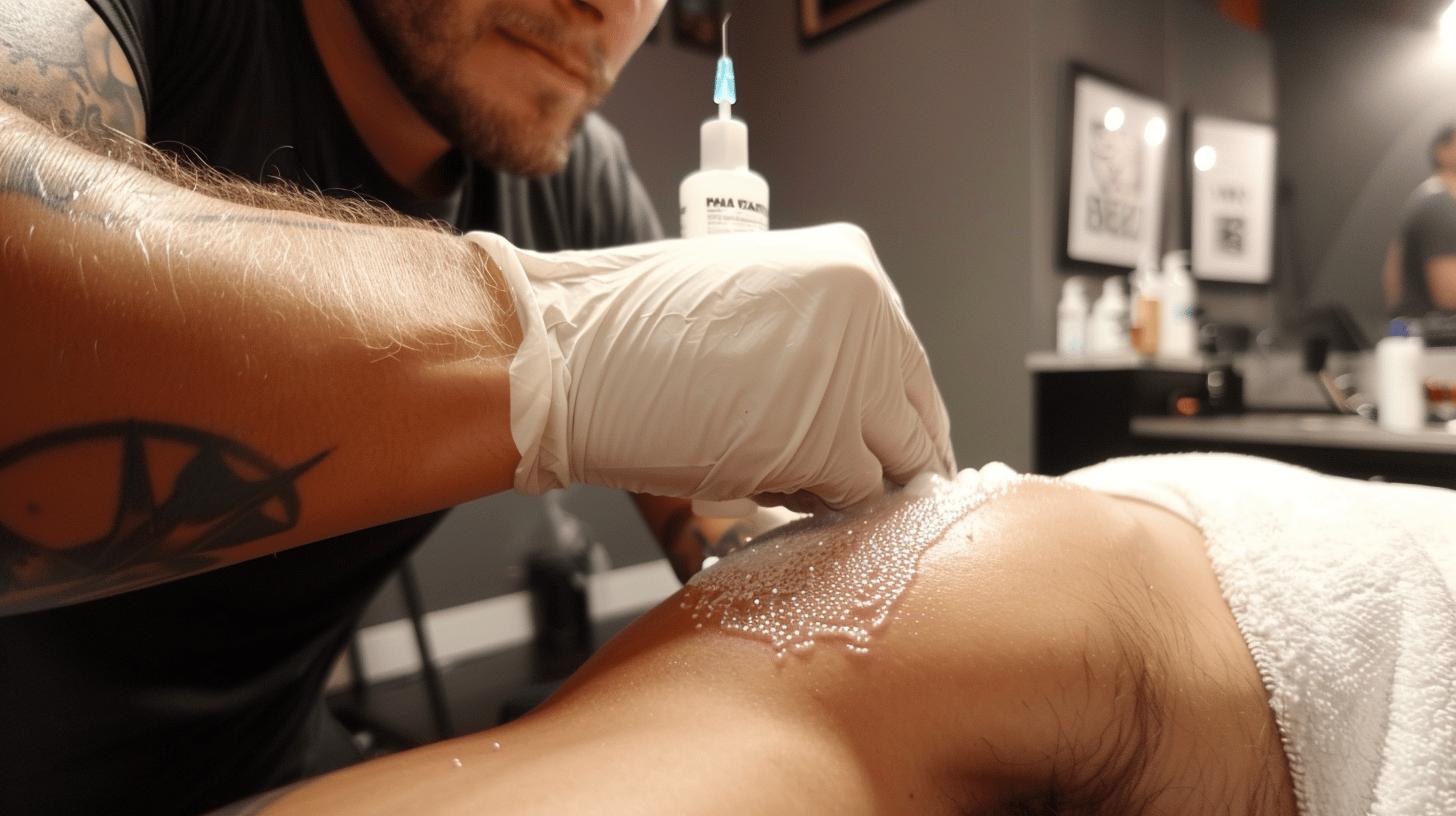
When it comes to tattoo pain relief, there are several options—each with its own benefits and trade-offs. Whether you choose a numbing cream before a tattoo, use a tattoo numbing spray, or opt for more natural alternatives to numbing cream, the goal is the same: to make the tattoo experience as pain-free as possible. The right method often depends on your tattoo session length, pain tolerance, and where on the body you’re getting a new tattoo.
| Method | When Used | Pros | Cons |
|---|---|---|---|
| Creams (e.g. Emla, TKTX) | Before tattoo appointment | Strong numbing effect, lasts 2–4 hours, numbs the area effectively | Needs 60–90 mins to take effect, may alter skin texture |
| Sprays (e.g. HUSH) | During tattoo session | Works on broken skin, fast-acting, can extend comfort mid-session | Shorter duration, less effective on intact skin |
| Natural methods (CBD balms, cold packs) | Before or after session | Low risk of irritation, soothing, no prescription needed | Mild relief only, no deep numbing effect |
| Distraction techniques (breathing, music) | During tattoo process | Free, no side effects, improves mental focus | Does not reduce the pain signals physically |
**Using a tattoo numbing cream** is often the most reliable method for those who want to significantly **reduce the pain** during a longer or more sensitive **tattoo appointment**. Sprays are helpful midway through large pieces, while natural options and distraction techniques suit clients with moderate pain tolerance or those getting a smaller **tattoo**. Always ask your artist about their preferred methods before your **next tattoo**.
Ingredients in Tattoo Numbing Creams: What to Look For and What to Avoid
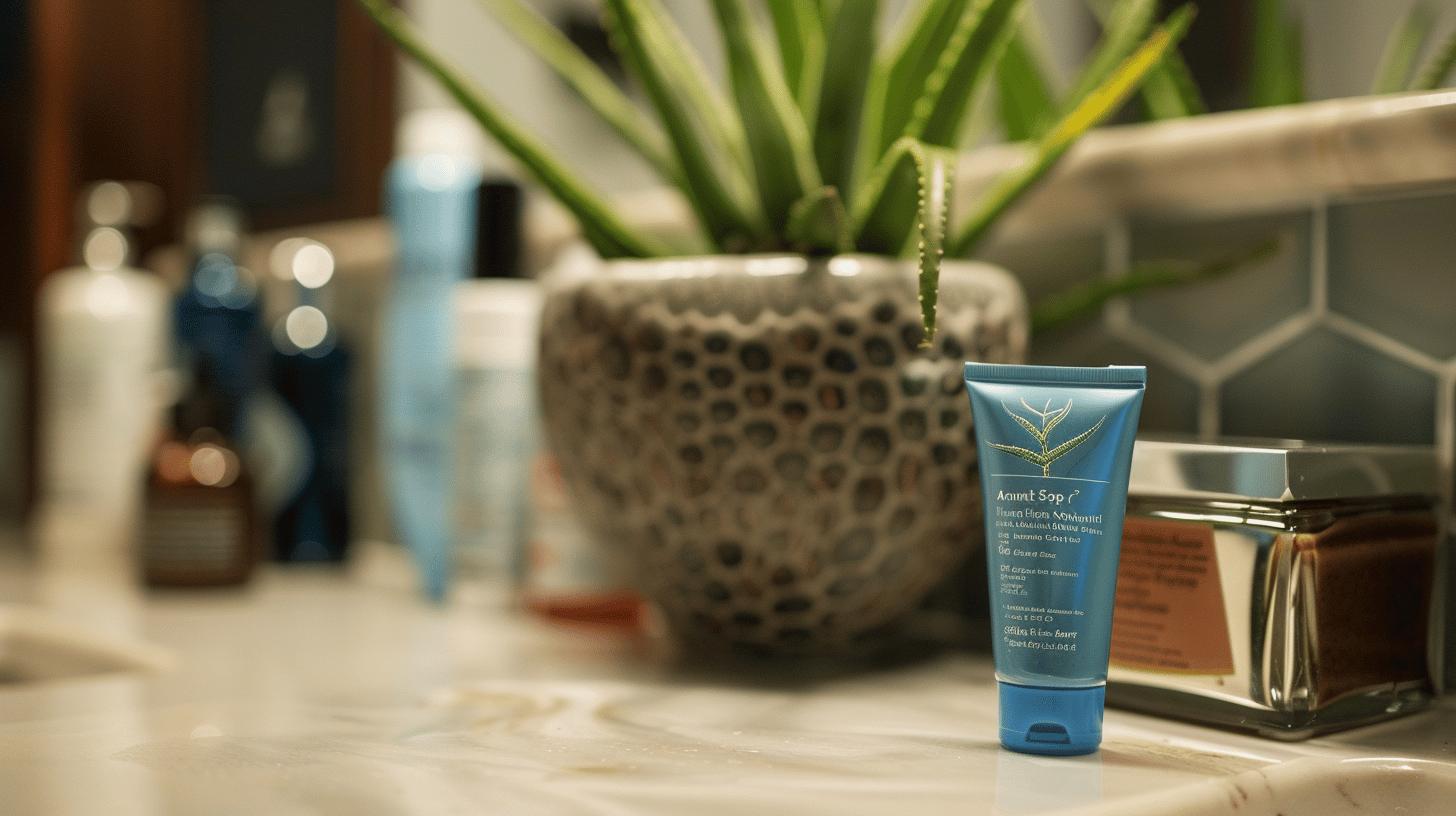
Choosing the right numbing cream for tattoos starts with understanding what’s inside the tube. The ingredients in tattoo numbing creams determine how well they numb the area, how long the numbing effect lasts, and whether the product might irritate your skin. If you want to use numbing cream before a tattoo, especially on sensitive skin, you need to know the difference between effective numbing agents and ingredients that can cause problems.
The best tattoo creams with lidocaine use a strong local anaesthetic—typically 5% lidocaine—to block pain signals from the nerves in your skin. This helps reduce the pain during your tattoo appointment. But lidocaine isn’t the only thing that matters. Soothing agents can improve comfort, while some additives may cause irritation or affect how the ink settles into the new tattoo.
Recommended Ingredients
- Lidocaine (up to 5%) – A powerful topical anaesthetic that numbs the skin effectively
- Prilocaine – Often combined with lidocaine, as seen in Emla, for stronger results
- Aloe vera – Soothes the skin and reduces inflammation during the tattoo process
- Vitamin E – Helps protect and nourish the skin during and after the tattoo session
- CBD extract – Offers calming effects and may reduce skin reactivity
Ingredients to Avoid
- Artificial fragrances – Can irritate the skin and disrupt the tattoo experience
- Alcohol-based compounds – May dry out the skin and affect ink absorption
- Parabens – Preservatives that may trigger allergic reactions in sensitive skin
If you’re using a tattoo numbing cream for sensitive skin, always read the label before application. Perform a patch test 24 hours before your next tattoo to check for irritation. Whether you’re getting a small tattoo or a large piece, the right skin numbing cream can make it much less painful—as long as it’s made with safe and effective ingredients.
Tips for First-Time Clients Using Numbing Cream Before a Tattoo
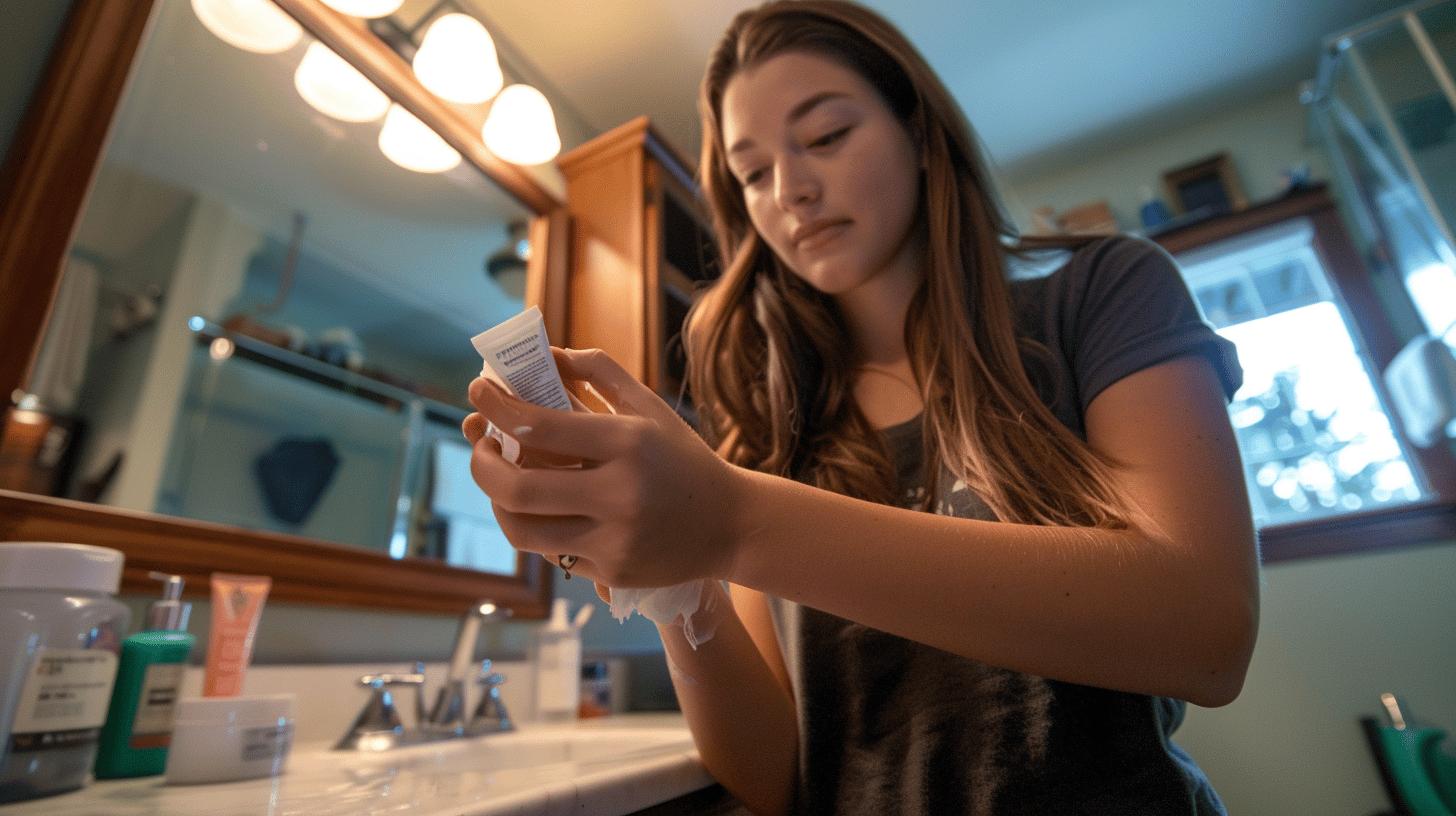
Using a tattoo numbing cream for your first tattoo session can make the experience far more manageable—but only if it’s done correctly. Skin numbing creams work by temporarily blocking pain signals from the nerves in your skin to your brain, helping to reduce the pain during the tattoo process. To get the most from a numbing cream before getting a tattoo, preparation and timing are critical.
8 Must-Follow Tips for First-Time Users
- Start prep 90 minutes before your tattoo appointment
Most creams take 30–60 minutes to take effect, but applying them 90 minutes before gives the numbing agent time to fully absorb into the skin. - Apply a thick layer of cream—don’t rub it in
Spread a thick layer of cream evenly over the area of skin you want to numb. Keep it on the surface—don’t rub it in. - Cover with plastic film to trap heat
Wrap the area in cling film to help the numbing cream work more efficiently by warming the skin and aiding absorption. - Use skin-safe, high-quality products like Emla or creams with topical lidocaine
Choose a numbing cream for tattoos with up to 5% lidocaine. Avoid cheap products that may irritate or react with your skin. - Do a patch test 24 hours before your tattoo
Check for allergic reactions by applying a small amount of the numbing cream to a less sensitive area. - Avoid caffeine and alcohol before your session
Both can thin your blood and increase sensitivity, making the tattoo experience more difficult, even with numbing cream. - Don’t reapply during the tattoo unless advised by your artist
Most creams are applied directly before tattooing and aren’t designed for mid-session use. - Use gentle aftercare products after your new tattoo
Avoid harsh chemicals or scrubbing. Aftercare affects healing more than whether you used a numbing cream beforehand.
Communication is key—ask your tattoo artist if they’re comfortable working on skin numbed with a local anesthetic. Many tattoo artists use numbing cream or allow it, but not all. Make sure your next tattoo goes smoothly by planning ahead.
What to Expect When Using Numbing Cream: Real Experiences
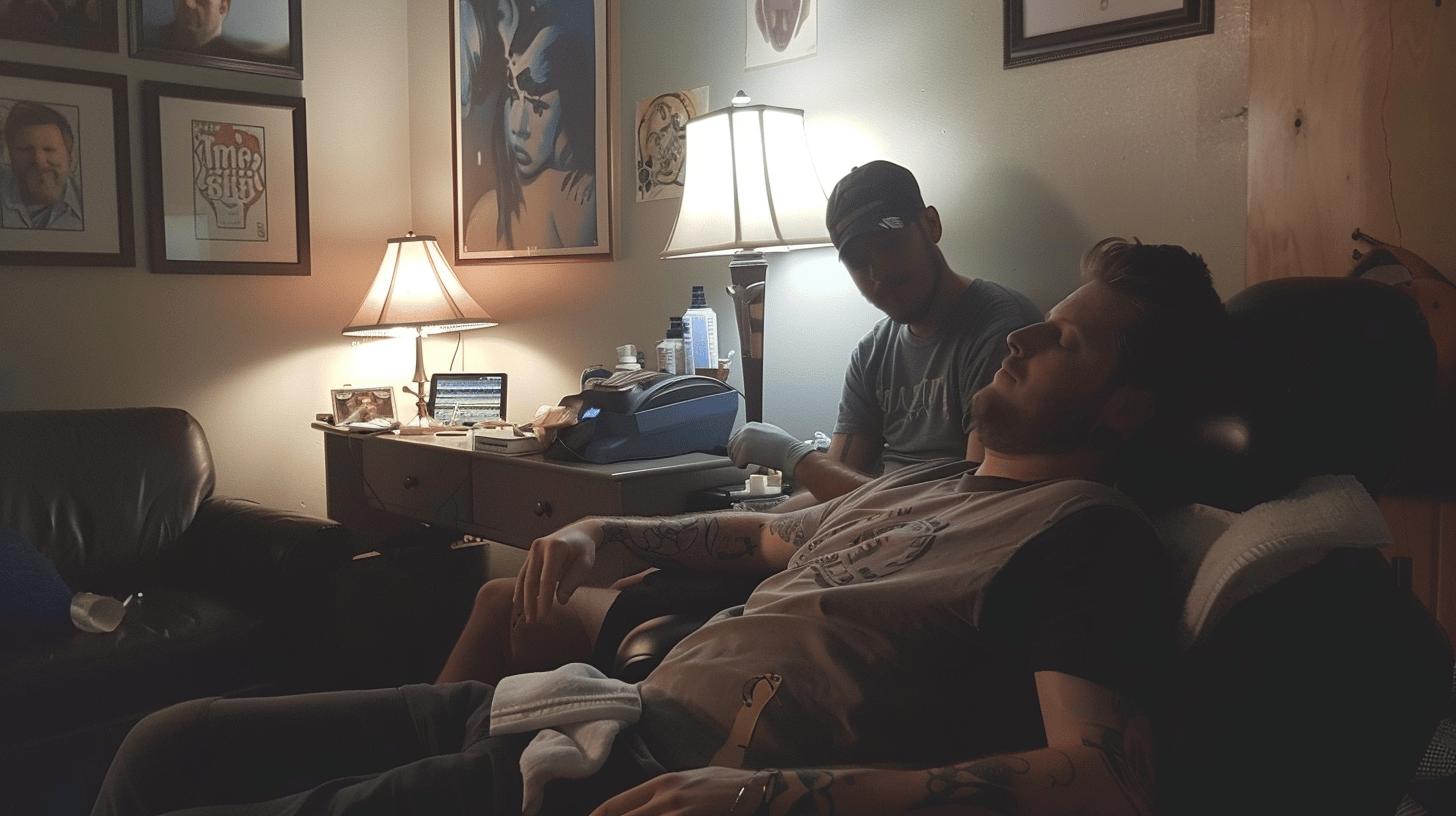
When using a tattoo numbing cream for the first time, expectations don’t always match reality. These creams are applied directly to the skin before a tattoo session and work by temporarily blocking pain signals from the nerves in your skin to your brain. While they can significantly reduce the pain you feel during the tattoo process, they don’t make the experience entirely pain-free. The numbing effect varies in strength and duration depending on the product, how well it’s applied, and how long it’s left to absorb into the skin.
Common Experiences Reported by Clients Using Numbing Cream
- Pain is reduced, but not eliminated
Most people report feeling dull pressure or vibration rather than sharp pain. - You can still feel the tattoo needle slightly
If you’re wondering “can you feel tattoo with numbing cream,” the answer is yes—just far less than without it. - The numbing effect wears off mid-session for longer tattoos
When the cream starts to wear off, the pain level can spike suddenly, especially if the area was heavily numbed. - Some patches may be less numb than others
Uneven application or early removal may cause inconsistent numbness across the tattoo area. - Skin may feel rubbery or tight to the touch
This is a normal response to the topical anaesthetic used in many creams, such as those containing lidocaine. - Most users say it made the process more tolerable
Especially for sensitive areas or long sessions, using a skin numbing cream made it easier to sit still.“I used Emla before my tattoo appointment and barely felt the needle for the first two hours. Once it wore off, though, the pain came on quickly—so timing was everything.”
— James, 32, full sleeve tattoo
“The numbing cream worked well for my ribs. I still felt pressure, but it wasn’t sharp or overwhelming like my first tattoo without numbing cream.”
— Leah, 27, second tattoo
Mental preparation is still part of the process. Even when using a tattoo numbing cream, it helps to stay calm, breathe steadily, and talk with your tattoo artist about how long the session will take. Knowing what to expect when using numbing cream can make your next tattoo more manageable.
Final Words
Choosing whether to use numbing cream before a tattoo means weighing comfort against possible changes to your skin or ink outcome.
Throughout this guide, the pros and cons of tattoo numbing cream were examined, along with how long they last, how they work, how to apply them properly, and what tattoo artists really think.
Different methods of tattoo pain relief were compared, alongside ingredient safety and the possible effects on healing. Knowing how numbing cream for tattoos performs helps you get the most from your tattoo session.
If you want to get a tattoo with reduced discomfort, using a tattoo numbing cream like Emla or TKTX could make your next tattoo easier. Just ask your tattoo artist first—many artists allow it when applied correctly.
Whether you want to use numbing cream or prefer a tattoo without it, preparation and clear communication will always lead to a better tattoo experience.
FAQ
Q: Should I use numbing cream before a tattoo or just deal with the pain?
A: Using a tattoo numbing cream can reduce the pain you feel during a tattoo session. Many artists support it for longer or more sensitive sessions, but others prefer working without numbing cream. Always ask your tattoo artist first.
Q: Why don’t all tattoo artists use numbing cream during the tattoo process?
A: Some tattoo artists avoid numbing cream due to changes it can cause in the skin. It may impact ink saturation, cause skin tightening, or leave residue that disrupts the tattoo process.
Q: How long should I apply numbing cream before getting a tattoo?
A: Numbing cream should be applied 60–90 minutes before your tattoo appointment using a thick layer and plastic wrap. This allows it to absorb into the skin and take full effect.
Q: What are the pros and cons of using a tattoo numbing cream?
A: Pros include reduced tattoo pain, longer tolerance per session, and a calmer tattoo experience. Cons are potential irritation, altered skin texture, and mixed opinions from the tattoo community.
Q: How to numb the skin before a tattoo without numbing cream?
A: Alternatives include deep breathing, distraction, cooling packs, or CBD balms. These can help reduce discomfort but don’t block pain signals like topical lidocaine anaesthetics.
Q: What’s the strongest numbing cream for tattoos available in the UK?
A: TKTX and Signature+ contain high concentrations of lidocaine and are considered strong tattoo numbing cream options. They’re widely reviewed and available from Amazon UK and other online shops.
Q: When should I apply lidocaine-based numbing cream before my tattoo?
A: Apply a lidocaine cream about 90 minutes before your tattoo. Use a thick layer, cover with plastic film, and wipe off the excess just before tattooing starts.
Q: Can I use Emla for tattoos and what do reviews say about its effectiveness?
A: Emla is a well-known skin numbing cream that contains lidocaine and prilocaine. Reviews say it offers moderate numbing for smaller tattoos but may be less effective for long sessions.
Q: Why shouldn’t you use numbing cream before a tattoo in certain cases?
A: Numbing creams may cause irritation or change how ink settles. If not applied or removed properly, the cream can interfere with the tattooing process and impact results.
Q: Do tattooists recommend using numbing cream for a better experience?
A: Some tattoo artists recommend numbing cream for pain-sensitive clients or large tattoos, while others prefer clients feel the tattoo to monitor skin reactions and ink flow.
Q: Can numbing cream affect tattoo healing or how the ink looks?
A: If not removed fully, numbing cream residue can affect ink saturation and healing. It won’t delay healing directly but might cause redness or minor irritation if mishandled.
Q: Can I apply numbing cream on a fresh tattoo for pain relief?
A: No, numbing creams aren’t intended for broken skin. Never apply them on a fresh tattoo as they can irritate the skin and damage healing tissue.
Q: Do you still feel the needle if you’re using a tattoo numbing cream?
A: You may still feel pressure or mild sensation, but pain is reduced. Complete numbness varies by skin type, product strength, and how the cream is applied.

